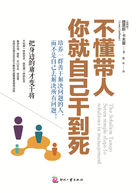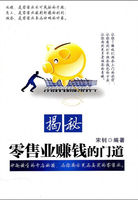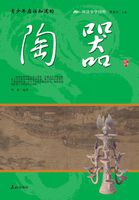附录A
center在学期间发表的学术论文与研究成果
发表的学术论文
[1]张小兵,李新建.学习型组织人力资源开发的资本观.经济问题探索,2005(3):16-20.
[2]张小兵,李新建.外国政府在人才中介组织与人才市场中的作用与角色.中国人力资源开发,2005(1):87-92.
[3]张小兵.刍议当代社会思潮与管理科学研究的结合.淮阴工学院学报,2005(4):46-48.
[4]张小兵,邹鑫.学习型组织测量研究综述.淮阴工学院学报,2006(6):53-55,69.
[5]赵瑞美,张小兵.我国政府型人力资源中介组织的发展初探.青岛科技大学学报(社会科学版),2005(2):111-113,117.
[6]燕补林,张小兵.论我国企业的人才战略.商业研究,2005(18):75-77.
主持或参与课题
[1]江苏省教育厅高校人文社会科学项目:学习型组织人力资源开发与管理研究(项目编号:04SJD630011),项目主持人,已结项。
[2]国家社会科学基金项目:政府主导型人力资源中介组织的改革与发展研究(项目编号:028BJY010),主持人为李新建,已鉴定;本人为项目参与人。
[3]国家自然科学基金项目:超组织人力资源管理的机理、模式与应用研究(项目编号:70672030),主持人为李新建,本人为项目参与人。
会议论文
[1]Zhang,X.B.Zheng,X.M.and Li,X.J.A study of the relationship between human resource management system and organizational performance: an organizational learning perspective.The 6th International Conference on Management Science, Wuhan,July, 2007.
[2]Zhang,X.B. Zhang,S.Y. and Zou,X.Absorptive capacity and organizational performance: the mediating role of organizational learning.The 1st International Conference on Management Innovation, Shanghai, June, 2007.
[3]张小兵,李新建,赵瑞美.企业集群学习研究综述.中国人力资源管理教学与实践研讨会第六届年会暨学术研讨会,2005年8月16-17日,天津.
[4]张小兵,李新建.外国政府在人才中介组织与人才市场中的作用与角色.首届中国人才学论坛暨学术研讨会,2004年12月10-12日,南京.
center附录B
center发表的论文
学习型组织人力资源开发的资本观
摘要:学习型组织自诞生之日起,便为全球研究管理的实践者与理论学者所青睐。开展学习型组织人力资源开发研究可以使我们从人力资源开发理论角度去更充分地认识学习型组织。文章通过对学习型组织、学习型组织人力资源开发、智力资本和社会资本相关文献的回顾,提出学习型组织人力资源开发的资本观,以期建立学习型组织人力资源开发的环境基础。
关键词:学习型组织,人力资源,资本
中图分类号:F272.92,F240
Capital View of Human Resources Development
in Learning Organization
Zhang Xiaobing1,2Li Xinjian1
(1.International Business School of Nankai University,Tianjin 300071;
2.Department of Economics and Management,Huaiyin Institute of
Technology,Huai′an 223001)
Abstract:Learning organization is studied by managers and theorists from all over the world.Human resources development study in learning organization can make us to rethink learning organization step by step.Capital view of human resources management was put forward by the author through reviewing related documents of learning organization, human resources development in learning organization, intellectual capital, and social capital.The goal of the article is to set up environmental basis of human resources development in learning organization.
Key words: Learning Organization, Human Resources,Capital
一、引言
学习型组织自诞生之日起,便为全球研究管理的实践者与理论学者所青睐。学习型组织的人力资源开发对于学习型组织的绩效的获取及组织竞争优势的建立具有重要意义。开展学习型组织人力资源开发研究可以使我们从人力资源开发理论角度和实践角度去更充分地认识和理解学习型组织。学习型组织中的人力资源应如何开发,开发的影响因素,开发的环境基础、原则及开发内容等都是值得我们人力资源工作者去开展研究的课题。
二、学习型组织人力资源开发文献回顾
1.学习型组织文献回顾
学习型组织自1990年由彼得·圣吉提出后,它已经成为这个时代的流行词。而随其流行的扩展与对其研究的深入,学习型组织的内涵反而模糊起来。至今仍未有一个定义明确而取得共识的概念。究其原因,主要是对与学习型组织相关的个体学习、组织学习和学习型组织的理解分歧较大。个体学习方面越来越多的学者更倾向组织中个人学习和组织内的认识学习和社会学习(许庆瑞,1997;Barbara,1999),这和以往教育学家、心理学家、社会学家研究的个人学习有所不同。组织学习概念最早出现在20世纪60年代,之后美国哈佛大学的阿吉瑞斯和萧恩(Argyris,Schn,1978)在《组织学习》一书中对组织学习作出了进一步的解释:“组织学习是发现和改正错误的过程,组织的学习是通过组织成员的学习来实现,个人的学习活动,同时也要受到由各种要素组成的类似一种社会生态系统的影响,我们将这些要素组成的系统称为组织的学习系统。”此后,Argyris、Huber、Nonaka、Hutchins、Dodgaon、陈国权、许庆瑞、杨忠等学者对组织学习的机理、方法及组织学习理论作了进一步的探讨。组织学习的理论基础主要有系统动力学理论(Argyris,1978)、偶然性理论(Hutchins E.1991)、基于心理学的组织学习理论(Argyris,1991)、基于信息理论的组织学习理论(Huber,Nonaka,1991)、组织学习能力理论(Dodgaon,1993)及网络学习理论(杨忠,2001)。而在对学习型组织界定方面,圣吉(1990)认为在学习型组织里,你不可能不学习,因为学习已经完全成了生活的不可分割的一部分。同时它又是一群能不断增强自身的创造他们想要创造的东西的能力的人组成的集合或团队;许庆瑞(1997)认为学习型组织就是组织中存在组织学习,并为企业立身的一个基本原则的组织形式,它能认识环境、适应环境,进而能动地作用于环境;冯奎(2000)指出学习型组织就是充分发挥每个员工创造性的能力,努力形成一种弥漫于群体与组织的学习气氛,凭借着学习,个体价值得到体现,组织绩效得以大幅度提高;而从管理心理学角度出发,王重鸣(2001)把学习型组织定义为整个组织主动创造、获取和转换知识,并根据新的知识和观点改变组织的行为。
2.学习型组织人力资源开发文献回顾
Sally Sambrook和Jim Stewart(2000)指出人力资源开发实践和终身学习在学习型组织的情况。并提出在学习型组织中如何确认和开发人力资源的影响因素:人力资源开发角色不清楚;缺少激励;不充分开发学习文化;缺少资金和时间。从人力资源开发的功能角度出发,Thomas N.Garavan, Patrick Gunnigle和Michael Morley(2000)认为人力资源开发可以简化学习型组织形成、产生过程。孟晓飞和刘洪(2001)首次在国内提出了学习型组织人力资源开发与管理的研究课题,并认为人力资源开发与组织学习是一种辩证统一的关系;学习型组织的人力资源管理是战略性的人力资源管理,是一种思维方式;学习型组织的人力资源开发与管理的过程中更应从全球化角度重视国际人力资源管理。陈天荣(2003)认为学习型组织人力资源开发应构建人力资源开发的立体管理模式。其基本理念为通过教育培训、增长知识、改善心智模式达到个人素质与能力的自我超越,通过建立共同愿景来实现团队学习,建立企业文化,增强人力资源的群体行为的一致性;以物质提供与感情投资相结合的激励方式为人力资源素质提高与群体交往与合作的创新行为提供了强有力的保障。邱昭良(2003)指出人是组织中最活跃的因素,发挥人的积极性与创造性是促进与保障组织学习的重要内容,而人力资源部门作为管理公司知识载体的重要机构,在创建学习型组织的过程中要承担重要职责,具体体现在几个方面:(1)制定适宜组织学习的人力资源管理制度和准则;(2)成为组织学习的设计师、倡导者、保护伞、联络人、导师与教练;(3)倡导开放、学习、交流的组织文化;(4)协助各级管理者做好知识型员工的管理;(5)培训规划与管理;(6)管理变革。柳瑞禹和冯兰杰(2004)对于在学习型组织发展中如何植入职业生涯规划管理作了论述,并指出学习型组织应用职业生涯规划及应注意的问题。上述学者分别从影响学习型组织人力资源开发的影响因素、人力资源开发对学习型组织的重要作用、学习型组织人力资源的战略开发、学习型组织人力资源开发的途径、人力资源部门在学习型组织人力资源开发中扮演角色及职业生涯开发等角度来阐述学习型组织的人力资源开发和管理,但都没有提到在学习型组织的人力资源开发过程中,学习型组织人力资源开发的环境基础到底是什么以及该环境基础会对学习型组织的人力资源开发造成什么样的影响。
3.智力资本理论与组织人力资源开发文献回顾
美国经济学家加尔布雷思(John Kenneth Calbraith,1969)在致波兰经济学家米哈尔·卡莱茨基(Michael Kalecki)的一封信中最早提出智力资本(Intellectual Capital)的概念。托马斯·斯图尔特(Thomas A.Stewart,1997)系统地界定了智力资本的内涵和内容。他将智力资本定义为:“公司中所有成员所知晓的能为企业在市场上获得竞争优势的事物之和”,并且指出企业的智力资本价值体现在企业的人力资本、组织资本和客户资本三者之中。企业不能独占其人力资本和客户资本;要开发人力资本,企业必须树立团队精神,改善集体运作环境以及其他社会学习方式。乌尔里奇(Dave Ulrich,1998)认为企业智力资本就是其成员的能力(Competence)与认同感(Commitment)的乘积,该定义强调组织中的人力资本与组织(结构)资本的相互联系和相互影响。而对于人力资本和组织资本的关系认识上,陈颉(2004)指出:“企业成长是一个企业家人力资本与组织资本不断促进、转化并实现提升的过程;企业家通过战略规划、管理团队建设、组织学习等方法可以促进员工人力资本、企业家人力资本向组织资本转化。”赵顺龙(2003)认为企业组织成员的知识、技能和经验在不同的制度结构下转化为企业组织资本,通过其价值形态的转移从而实现组织资本的价值增加。蒋宁(2003)提出通过知识转换,实现知识在人力资本与组织资本之间的传播、利用和创新。
4.社会资本与组织人力资源开发相关文献回顾
社会资本是一个比较新的概念,最初出现在美国经济学家劳瑞(Loury,1977)和法国社会学家皮埃尔·布尔迪厄(Pierre Bourdier,1985)的著作中。随着劳瑞和布尔迪厄理论的发展,社会科学家尤其是社会学家对社会资本的概念表现出浓厚的兴趣(Porters,1998)。Porters提出了一个广为认可的社会资本的定义,即个人通过其在社会结构或社会网络中的关系获取和运用稀缺资源的能力。关于到底是什么构成了社会资本,以及社会资本如何影响人的行为的争论仍在继续(Lin,2000Lin,Cook&Burt,2001)。总的说来,从社会关系网络的角度研究社会资本,有三种不同的观点:(1)网络成员观(network membership approach)。政治学家普特兰(Putnam,2000)是网络成员观的重要倡导者。该观点认为从个体的角度来看,一个人在民间组织中拥有越多的会员身份,他就越可能参与或融入社会之中。这个过程的最终结果是社会普遍维持了较高水平的信任和社会资本。(2)网络结构观(network structure approach)。科尔曼(Coleman,1988,1990)研究了社会资本是如何促进人力资本的创造和团队凝聚力的维持。他把频繁互动的密集网络、相互信任和互相依赖的规范视为社会资本。博特(Burt,1992,1997)认为稀疏网络包含了社会资本。他认为稀疏网络中存在“结构洞”——主体之间的关系短裂。这些“结构洞”的存在减少了主体受到的束缚,让他们获得信息优势及控制优势,从而促成了他们在经济上的成功。(3)网络根植资源观(network-embedded resource approach)。该观点主要倡导者林(Lin,1982,1999,2000)认为社会资本是根植于社会网络之中的资源(边燕杰,2004)。国内学者更多地讨论组织人力资源开发和社会资本是如何结合以及其结果(郭毅,朱熹,2003;边燕杰,2000,2004;周小虎,陈传明,2004;郑胜利,2002;方竹兰,2003;赵子祥,2003;李燕萍,2002)。郭毅和朱熹(2003)从管理研究和组织理论的角度指出组织中人力资源开发不应局限于静态的人力资源动机行为的研究中,还应和组织的社会(网络)资本紧密结合起来。边燕杰(2000,2004)通过企业家能力调查得出企业家人力资源开发,尤其是能力和受教育程度对企业的社会资本贡献的关系。周小虎和陈传明(2004)指出:个体行为转化为组织行为的环节可以通过社会资本实现,同时社会资本的战略性管理会导致组织的持续竞争优势。郑胜利(2002)把企业的社会资本分为企业内部社会资本和企业外部社会资本。企业内部社会资本有利于推动企业成员的信任与合作,促进企业各部门之间的沟通和协调,促进企业和员工的知识转移、知识共享。方竹兰(2003)强调了从发挥资源要素作用的个体人力资本向发挥社会关系作用的群体社会资本转变的重要性。赵子祥(2003)从社会学研究视角出发强调指出社会(网络)资本中的思想观念、制度等的改变会对人力资源的质量带来本质的影响。李燕萍(2002)在社会资本理论基础上考察了人力资源开发与社会资本的关系,分析人力资源开发的社会资本增值效应,构建了以社会资本为导向的人力资源开发模式。综上所述,组织人力资源开发是与组织内外部的社会资本密不可分的,与社会资本结合的程度将决定组织人力资源开发的效果。
三、学习型组织人力资源开发的资本观
1.学习型组织人力资源的分类
由于组织中人员及附着在人员身上的知识、技能等的差异,使得组织中人力资源或组织人力资本呈现出多样性,这也使组织管理者更加清楚地认识到拥有和管理多样性人力资源池(Human Resources Pool)或人力资本池(Human Capital Pool)的重要性。为了使组织人力资源池或人力资本池的作用得到更好的发挥,学者们从不同角度对组织人力资源和组织人力资本进行了分类()。学习型组织中的人力资源也具有多样性的特性。结合美国管理学者坦南鲍姆(Robert Tonnenbaum)和施米特(Warren H·Schmidt)提出的领导方式连续体统一体理论(该理论认为从集权型到放任型领导方式之间存在着若干过渡形式的领导方式)和学者们对组织人力资源或人力资本的分类,以组织中人力资源的自我学习能力和被动学习能力作为分类依据,笔者认为学习型组织的人力资本是包括非学习型人力资本到学习型人力资本的连续的统一体。
2.学习型组织人力资源开发的资本观
学者们无论是从人力资本角度出发,还是从智力资本、社会资本角度来谈及组织人力资源开发,都是站在各自角度和立场提出组织人力资源开发的途径。笔者结合上述论述给出学习型组织人力资源开发的资本观框架。
由图中可以看出:(1)学习型组织中人力资源开发强调充分利用组织的组织资本、社会资本和人力资本,学习型组织人力资源开发的效果也体现在学习型组织人力资本、组织资本和社会资本的统一和整合过程中;学习型组织人力资源开发的效果可以用函数表示为:
PHRDf(STHRD,B(K,S,A,OC,SC,I),OC,SC,HC,ELO)
式中PHRD表示学习型组织人力资源开发的效果或绩效;它取决于人力资源开发的实践、员工行为、组织资本、组织的社会资本、人力资本和组织环境;
f表示学习型组织人力资源开发的效果和组织内外因素的函数关系;
STHRD表示学习型组织战略性人力资源开发的实践活动;
B(K,S,A,OC,SC,I)表示学习型组织员工的行为,它受员工的知识K(Knowledge)、技能S(Skill)、能力A(Abilities)、组织资本OC(Organization Capital)、组织社会资本SC(Social Capital)和其他中介变量I(In-betweens)共同作用;
OC表示学习型组织的组织资本(Organization Capital)
SC表示学习型组织内外部的社会资本(Social Capital);
表示学习型组织的环境(Environment)。
从上述论述中我们可以看出,学习型组织人力资源开发的效果或绩效是基于以下假设而取得的。这些假设有:
假设1:学习型组织的智力资本(或者组织资本、人力资本)、组织的社会资本和学习型组织人力资源开发的绩效是相关关系。
假设2:学习型组织员工的行为对学习型组织人力资源开发的绩效有显著影响。
假设3:学习型组织战略性人力资源开发的实践活动和学习型组织人力资源开发的绩效是正相关关系。
(2)学习型人力资本的最终形成是靠学习型组织的社会资本、组织资本、组织环境和学习型组织员工、组织投资的共同作用;学习型组织的人力资源开发重点应放到学习型人力资本的开发和管理上来,并且组织负责人力资源工作的管理者更应该从贡献于学习型组织战略目标的角度去开发组织的学习型人力资本。(3)组织环境对学习型组织人力资源开发发挥的作用越来越重要。环境的变化必然导致学习型组织战略、组织结构、组织资本和学习型组织社会资本发生相应的变化;这表明学习型组织的人力资源开发要树立权变的开发思想。(4)学习型组织人力资源开发的组织资本、社会资本及学习型组织人力资本的本质是学习型组织人力资源开发的资本环境基础。
四、结 论
本文基于学习型组织人力资源开发相关文献回顾和梳理,提出学习型组织人力资源开发的资本观框架和相关假设。同时也针对学习型组织中的人力资本进行分类,从学习能力角度把人力资本分为从非学习型人力资本到学习型人力资本的多种人力资本。并且指出学习型组织人力资源开发的重点应是开发组织的学习型人力资本。当然,在学习型组织人力资源开发的资本观的开发环境框架下怎样做和如何做好学习型组织的人力资源开发工作,同时通过实证来验证相关假设,仍有许多工作值得研究工作者去探讨和研究。
参考文献:
[1]Senge.P.M.The leader's new work:building learning organization.Sloan Management Review,1990.Fall,7-23.
[2]Argyris C.Donald schon.OrganizationLearning:A Theory of Action Perspective.Addiaon-Wealey,Reading,1978.
[3]Huber G.P.Organization Learning :the Contributing Process and Literatures.Organization Science ,1991,(3):88-115.
[4]Nonaka,I.The knowledge-creating company.Harvard Business Review, November-December,1991,(12):96-104.
[5]Hutchins E.Organization Work by Adaptation.Organization Science 2, 1991(2):14-39.
[6]杨忠.新分析框架——组织学习与学习型组织理论.江海学刊,2001(2):28-33.
[7]冯奎.学习型组织:未来成功企业的模式.广州:广东经济出版社,2000.
[8]许庆瑞,管理学.北京:高等教育出版社.1997年7月第1版.
[9]王重鸣.管理心理学.北京:人民教育出版社.2001年3月第1版.
[10]Sally Sambrook,Jim Stewart,“Human Resource Development in Small Organization”,Journal of European Industrial Training,2000,24(2)(3)(4):60.
[11]Thomas N.Garavan,Patrick Gunnigle,Michael Morley:“Contemporary HRD Research:A Triarchy of Theoretical Perspectives and Their Preions for HRD”, Journal of European Industrial Training,2000,24(2)(3)(4):60.
[12]孟晓飞、刘洪.学习型组织的人力资源开发和管理.中国人力资源开发,2001(2):23-26.
[13]陈天荣.学习型组织人力资源开发新思路.陕西工学院学报,2003(4):60-64.
[14]邱昭良.学习型组织新思维.北京:机械工业出版社.2003年1月第1版.
[15]柳瑞禹、冯兰杰.试论学习型组织职业生涯管理.中国软科学,2004(6):87-90.
[16]Thomas A.Stewart.Intellectual capital: The new wealth of organizations.Published by Doubleday,1997:1.
[17]Dave Ulrich.Intellectual CapitalCompetence×Commitment.Sloan Management Review,Winter 1998,15-26.
[18]陈颉.企业家人力资本与组织资本的互动机制研究.现代财经,2004(7):29-32.
[19]赵顺龙、陈同扬.企业组织资本略论.学海,2003(3):81-84.
[20]蒋宁.基于知识转换的人力资本与组织资本的良性互动.管理现代化,2003(3):46-48.
[21]Loury,G.1977.A dynamic theory of racial income differences.In P.A.Wallace&AmLamond(Eds.),Women,minorities,and employment discrimination:153-186.
[22]Pierre Bourdier.1985.Forms of capital.In Richardson (Eds.).Handbook of theory and research for the sociology of education: 241-258.New York: Greenwood Press.
[23]Porters.A.1998.Social capital: Its origins and applications in modern sociology.Annual Review of Sociology,22:1-24.
[24]Lin.N.2000.Social capital: A Theory of social structure and action.New York: Cambridge University Press.
[25]Lin, N. Cook, K.&Burt, R.(Eds.) 2001.Social capital: Theory and research.New York:Adline.
[26]Putnam, R.D.2000.Bowling alone:The collapse and revival of American community.New York: Simon&Schuster.
[27]Coleman, J.S.1988.Social capital in the creation of human capital.American Journal of Sociology,94:S95-S121.
[28]Coleman, J.S.1990.Foundations of social theory.Cambridge, MA: Harvard University Press.
[29]Burt, R.1992.Structural holes.Cambridge, MA: Harvard University Press.
[30]Burt, R.1997.The contingent value of social capital.Administrative Science Quarterly,42:339-365.
[31]Lin,N.1982.Social resources and instrumental action.In P.Marsden&N.Lin (Eds.), Social structure and network analysis:131-147.Beverly Hills,CA:Sage.
[32]Lin,N.1999.Building a network theory of social capital.Connections,22:28-51.
[34]郭毅、朱熹.国外社会资本与管理学研究新进展——分析框架与应用评述.中国工业经济,2003(7):2-7.
[35]边燕杰、丘海雄.企业的社会资本及其功效.中国社会科学,2000(2):87-99.
[36]边燕杰.公司的社会资本及其对公司业绩的影响:社会网络分析.中国企业管理前沿研究.北京:北京大学出版社,2004年4月第1版.
[37]周小虎、陈传明.企业社会资本与持续竞争优势.中国工业经济.2004(5):90-96.
[38]郑胜利.基于社会资本积累的企业竞争优势分析.云南财贸学院学报.2002(2):79-81.
[39]方竹兰.从人力资本到社会资本,学术月刊,2003(2):80-86,94.
[40]赵子祥.社会资本在经济发展中的重要地位和潜在功能——关于社会资本的社会学研究述评.社会科学战线,2003(5):219-222.
[41]李燕萍.人力资源开发的社会资本功能研究.中南财经政法大学学报,2002(3):15-21.
[42]D.P.Lepak,S.A.Snell,2002.Examining the human resource architecture:the relationships among human capital, employment and human resource configuration.Journal of Management,28(4):517-543.
[43]唐翌、赵曙明.人力资源类型及其策略选择——基于知识的角度.现代管理科学,2003(8):6-8.
[44]顾建中、黄攸立.论企业人力资本的概念和类型.华东经济管理,2001(1):39-41.
[45]郑耀洲.变革环境中的企业人力资源分层分类管理.中国劳动,2004(5):35-37.
[46]王毅敏、封铁英、段兴民.组织中人力资本的三层中位扩展分类研究,2004(4):20-23.
[47]张砚.人力资源的分类计量模式.中国人力资源开发,2004(4):23.
[48]丁栋虹.从人力资本到异质型人力资本与同质型人力资本.理论前沿,2001(5):12-14.
[49]Mark Dodgaon.Organization Learning: A Review of some literatures.Organization studies,1993,14(3):375-394.
[50]王乐夫.领导学:理论、实践与方法(第二版).广州:中山大学出版社,1998年8月第1版,2002年11月第2版:6.
外国政府在人才中介组织与人才
市场中的作用与角色探讨
摘要:文章在介绍国外人才市场及人才中介组织的基础上,着重阐述外国政府在人才中介组织与人才市场的作用与所扮演的角色,同时指出外国政府在人才中介组织与人才市场的作用与所扮演的角色给我国人才中介组织和人才市场建设的启示。
关键词:政府,人才中介,人才市场
中图分类号:F249
人才在经济全球化和一体化的过程中发挥着越来越重要的作用。一个国家人才市场及人才中介组织发展的程度将对该国的经济增长起非常重要的作用。国外的人才市场和人才中介组织经历长时期的发展已走向成熟和趋于形成市场经济下的固定模式。当然,政府在人才市场和人才中介组织发展中扮演了非常重要的角色;如何认识国外政府在人才市场和人才中介组织中的作用以及通过对此认识能给我国培育和发展人才市场和人才中介组织有何启示,这是每一个政府工作者和学者们应该关注的课题。
一、国外人才市场和人才中介组织
1.美国人才市场和人才中介组织
在美国,所谓的人才市场的称谓并不流行,而与一般意义上的劳动力市场混用。有学者将美国劳动力市场分为四类:第一类是由要求具有普通高等教育水平的职位组成的,工资待遇较好的劳动力市场。这种职业既存在于竞争的经济部门,也存在于垄断的部门;第二类是垄断的劳动力市场。其特点是有工会组织、内部等级制度和老资格的雇员,享有相对就业保障;第三类是竞争型劳动力市场。其特点是与其他各种劳动力市场相比,它的工资最低、就业最不稳定、工作条件最差和提升机会最少。这一劳动力市场不仅包括竞争公司中的职位,而且还包括垄断公司的办事员之类的职位;第四类是手工业劳动力市场。包括要求只有经过长期实践才能学会的传统手工技能的工作岗位。也有学者认为美国的人才市场既有有形的,也有无形的;既有地面集市型的,也有网上交流型的。在各种各样的人才交流模式中,互联网发挥出非常重要的作用。
美国在发展经济和现代化过程中,作为市场经济体系的重要组成部分的人才市场,已经形成一套制度。综合起来看,美国人才市场的特点有:人才高度社会化;完善的双向选择机制;高度发达的人才信息;公平的竞争淘汰机制;遍布全球的人才中介机构和强有力的政府调控。
美国的人才中介机构有公办的和民办的两类。遍布美国各地的人才中介机构达数千个之多。除国内机构外,它们还在世界各地广设分支机构。
2.德国的人才市场和人才中介组织
德国是西方发达国家之一,其经济制度属西方现代混合经济。德国从1922年开始建立人才市场(又叫职业介绍所),这个市场开始时由国家垄断。全德16个州的180个地方劳动局均设有人才市场,组成了覆盖全国的人才市场网络。这些职业介绍所的工作人员全部由国家职员和工作人员组成,他们的主要职责是平衡人才市场、进行职业咨询、发放失业救济金、监督打黑工等。他们的工资与福利全部由政府承担。德国人才市场是公开营业的常设机构,有固定的场所与工作时间,无论是人才还是工人择业都统一在同一个市场内,用人单位与求职人员随时都能前往联系。目前,全德各地的人才市场上的人才供需信息已基本实现全国联网沟通,可以通过各种现代化手段,使求职者了解用人单位的性质、岗位对人员的要求等信息。
德国的人才中介机构有上千个,遍布全国各地,有数万人从事这项工作。这些机构业务面很广,除了举荐人才,沟通人才供求信息,进行项目咨询外,还开展人才研究、人才评价、人才开发和人才培训等。联邦劳工局是德国职业介绍机构的最高行政领导部门,在行政上自主自立,实行董事会制度,总部设在纽纶堡,附设劳动市场和职业研究所;在九个州设劳动分局,州下再设劳动分局及分支办事机构。其具体职责范围是负责劳动介绍(推荐)和人才咨询、职业培训、就业促进等工作。联邦劳动介绍中心是德国专门从事职业介绍和推荐人才的官方机构,直属联邦劳工局;但在业务方面有相当的自主和独立性。其主要任务是向经济界推荐领导人、专业技术人员和管理人员。从1994年8月1日起,德国开放了私人人才中介,弥补了国家职业介绍垄断造成的不足,在人才招聘中发挥了应有的作用。这些人才中介机构,要求经过地方劳动局批准。德国的私营人才中介机构很发达,与官方的职业介绍机构进行激烈的竞争。其主要业务是选择、举荐经理和高级人才,进行人才评价、规划工资报酬和组织人员培训。
3.比利时的人才市场和人才中介组织
比利时是一个人口只有一千多万的国家;它是欧洲共同体成员国之一,实行混合型的经济政策,其人才市场比较发达。比利时的人才中介机构的组织形式多种多样。国家就业办公室是一个官办机构,在全国各地设有分支及下属机构,其主要业务有:定期与经济生活的各个领域保持联系,分析各行业对人才的需求,及时了解人才短缺情况;给企业寄送寻找工作人员的简历和名单;把企业要招聘的人才信息通知寻找工作的各类人员。职业服务处也是国家设立的机构,该机构主要帮助寻找工作的人才与企业直接联系。职业介绍所是私人人才中介机构,其主要业务是为企业招聘临时工。国家就业办公室临时工介绍所、就业指导中心、职业信息交流会等机构主要是为就业人才提供人才市场的信息和政策咨询。
4.英国人才市场和人才中介组织
英国也是西方发达国家之一。它有一个与其经济制度相适应的人才市场,这个市场是开放的市场。英国实现人才供需配置的调整,大多是通过专门的公办或民办的人才中介机构实现的。国营人才中介机构大多数属于英国就业部,遍及全国各地,其主要功能是适应产业中心转移的需要,承担人才的重新配置与调整,承担人才的培训,改善人才结构,定期向社会发布人才供需信息。英国私营人才中介机构大多是以赢利为目的,其经营方式和吸引客户方面有强烈的主动性。
5.加拿大人才市场和人才中介组织
加拿大的人才市场比较发达。人才中介组织在人力资源开发和管理中起着重要的作用。加拿大的人才中介机构有三类:一类是招聘服务企业;二是全国就业协会,下设几百个职业介绍所;还有一类就是猎头公司。这三类人才中介机构除共性外,工作各有侧重,但也是互相联系并相互推荐人才。
6.日本人才市场和人才中介组织
日本是发达的市场经济国家。日本的人才市场经历了商业资本主义、工业资本主义、后工业资本主义后,而形成类别齐全、结构复杂的体系,在日本这一体系称为劳动力供求调整系统。日本的人才中介机构有公共部门主办的人才中介机构和民间主办的人才中介机构两类。公共部门主办的人才中介机构是具体执行国家有关人力资源配置方面社会政策的机构,其主要职能在于实现完全就业这一社会目标,保护人才在市场交易过程中处于劣势的一方。公共部门主办的人才中介机构主要有直属于劳动省的公共职业安定所与隶属于文部省的学校以及人才银行。民间主办的人才中介机构是由职业安定所以外的职业介绍、人才招聘、劳动者供给事业以及人才派遣事业等四种类型所组成。它对日本人才市场发挥着补充、完善的作用。民间的职业介绍分为收费的和免费的两种;收费的职业介绍机构为一些具有特殊才能的人才服务,免费的职业介绍机构原则上没有对象业种限制,但必须在限定的业务处理范围内进行职业介绍活动。公益性质的职业介绍机构一般由学校及学校以外的免费的职业介绍机构所组成。人才招聘为用人单位直接向社会招聘人才。劳动者供给事业是日本的一种固有的人力资源配置方式;劳动者供给事业主为专司经营向临时需要劳动力的需求方提供劳动力服务的劳动老板,他接受需求方的指挥命令。需求方向劳动者供给事业主支付报酬,劳动者从劳动者供给事业主处领取工资。人才派遣业在日本是一种新兴的人力资源配置方式。所谓人才派遣业就是指把拥有社会通用技术的自我雇佣者派遣到需要他们但却不与他们建立雇佣关系的企业中去进行劳动的一种特殊业务的事业体。人才派遣业服务的对象为不涉及企业的经营管理、人事管理、研究开发等企业秘密的有关人士。目前,日本政府认可的劳动者派遣事业有一般劳动者派遣事业和特定劳动者派遣事业两种。
二、外国政府在人才中介组织及人才市场的作用和角色
(一)各国政府在人才中介组织及人才市场的作用和角色
1.美国政府在人才中介组织及人才市场的作用和角色
美国政府在人才中介组织及人才市场的作用和角色主要表现在:(1)联邦政府、州政府和地方政府依据市场制定人才政策。美国的人才管理部门不直接对人才市场的微观操作进行干预,而是把主要精力放在研究政策和制定政策上,通过宏观政策对人才流动等进行国家调节。美国联邦政府的人才资源开发与管理,由国家人力资源发展部、国家人事管理办公室和国家人才制度保护委员会协作共同承担。联邦政府出资聘请人才管理专家对人才资源管理过程中的每个环节、每个细节进行设计,形成相对固定的运作模式后,指导地方政府和企业进行人才资源的规划与招聘、人才质量的核定、人才岗位的测试与培训、人才效能的激发与开发。国家人才制度保护委员会每隔三年对联邦政府的人才体制、人才体系的运作效益、人才价值的使用程度等,按照一定的标准进行质量评估,并向总统写出专题报告,分析国家在人才管理工作中的经验与不足,提出解决问题的方案和对策。在美国,上至联邦政府、州政府,下至地方政府、社区,在不违背宪法和国家政策(如联邦关于保护人才合法权益的最低工资额和最长日工作时间等相关法规、保障人才的贡献与所得相称的公平交易法)的前提下,可以自行制定吸纳、使用人才的相关政策。从政府人事管理情况看,因美国属联邦制国家,地方各级政府具有很大的自主权,各级政府的机构设置、编制数额、公务员雇佣等都由本级政府报议会审批。各级政府对不同层次、不同类型的公务员采取不同方式进行管理,其中对政务类公务员实行选任制、委任制;对业务类公务员实行雇佣制,并对许多业务性技术人员面向社会公开招聘;对退伍军人给予优惠待遇;对国家安全方面高层次专家型公务员采用高薪聘用的方式。另外政府还采取劳动力的培训和再培训及刺激企业增加工作岗位等政策来调节人才市场。联邦政府、州政府和地方政府实际上在市场与人才中间充当了经纪人的角色。(2)政府制定法律并通过法律手段对人才市场及人才中介组织进行规范管理。对于社会性人才资源配置,政府主要通过法律手段进行规范管理。在具体管理、运作上不经手、不干预,切实达到了政企分开,让企业自主择人,人才自主择业。在人才资源配置和人才就业、人才市场活动方面,美国从联邦到地方各州,都分别制定了不少法律。其中全国性的法律法规主要有:《民权法》、《反种族歧视法》、《退休法》、《保健和安全法》、《工作调整和再培训通知法案》、《提供就业机会雇主减税法案》、《劳动人口投资法案》等法律法规,这些法律法规规范了人才中介服务业。对于这些法律、法规,政府机构、社区组织、企业和个人都能自觉遵守,形成了一种良好的法制环境。由于美国实行高度市场化的市场经济体制,其人力资源配置业达到了高度市场化。人才配置、人才就业在法律允许的范围内,比较充分地发挥出了市场机制的作用。
2.德国政府在人才中介组织与人才市场中的作用和角色
德国从联邦政府到各州、市、区政府有着完善的人才市场服务体系。在宏观调控方面,联邦政府在全国实行人力资源的优势互补和总调剂。联邦政府的主要做法如下:(1)依据《劳动就业法》、《青年保护法》等法律完善待业及就业人员的职业培训制度,要求政府人才机构和社会人才中介机构必须进行职业培训,并提倡全国范围开展职业培训和职业咨询。联邦德国的职业培训制度已经形成体系、网络化,在西方发达国家中处于领先地位。(2)在全国范围内采用公平竞争的择优机制,即社会招聘用人制度,人才流动的双向选择和合同管理。(3)德国政府为缓解就业难问题而采取措施允许和鼓励建立私人人才中介机构。二战后,德国政府曾一度取消了私人职业介绍机构,严令禁止职业介绍和盈利行为,并于1969年制定了《就业促进法》;从1994年8月1日起又允许建立私人人才中介机构。政府在管理私人人才中介机构上,一方面规范条件与行为加以限制,以防止盲目增长。私人人才中介机构的成立,需经市以上联邦所属的人才机构审查和批准;另一方面放开私人人才中介机构的市场价格,允许其收取较为昂贵的中介费用。
3.比利时政府在人才中介组织与人才市场中的作用和角色
比利时的人才市场是一个自由市场。比利时政府对人才市场的干预和监管还是相当严格的。政府采取的监管措施有:(1)对进入人才市场的供方的限制。比如,未成年人不得进入人才市场;只有持有某类专业文凭,才可以进入相应的专业人才市场。(2)在人才招聘中男女平等,不得有性别歧视。(3)对人才市场交易的规定。劳资双方达成交易,要有试工合同;试工期满,双方满意须签订长期劳动合同,合同条款要明确。劳动合同必须符合国家法律有关规定。(4)举办职业培训班。所有在人才中介机构登记的人或根据就业合同应雇主的要求培训的工人等都可以接受国家就业培训。
4.英国政府在人才中介组织与人才市场中的作用和角色
英国政府主要通过宏观政策对人才市场进行调节。由于认识到人才培养的重要性,英国政府针对其传统的人才管理体系中只注重职位分类和岗位责任,不够注重任职者的素质能力和行为表现的弊端,大胆引进新的观念和新的做法。首先,英国在20世纪90年代中期把“行为测评”机制引入到人力资源管理中。“行为测评”的基础是根据岗位要求制定行为标准;该机制为人才资源的开发及人才中介机构的运作提供明确的目标。行为标准的制定由联邦政府和地方政府分头进行。其次,为配合“行为测评”机制的建立,英国政府鼓励社会办培训,形成了开放性的培训网络:国民教育体系、职业开发体系、专业开发培训体系和行业开发培训体系。另外,为了使更多的人有机会得到职业培训以适应劳动力市场的需求,英国联邦政府加大投资力度,构筑新的人才投资模式。1991年英国政府制定了全国性的《人才投资标准》,把加大人才培养投资力度,构筑新的人才投资模式作为一项基本国策来推行,大力推行“投资于民”的政策。该标准对全国范围内的人力资源管理机构在实施“人才投资”过程中的具体环节进行了明确规定。1993年英国成立了联邦“人力资源投资委员会”,具体负责“人才投资”政策的推行和监督工作。英国政府还充分利用其国家法律强制性的作用来实施对人才市场的管理。《就业法》、《工业关系法》、《就业促进法》及依照《移民法》制定的劳动许可证制度等保证了人才市场和人才中介机构运作的规范性。这也充分说明英国政府充分运用法律工具来施行对人才市场和人才中介机构的监管。
5.加拿大政府在人才中介组织与人才市场中的作用和角色
加拿大政府除了制定全国的人力资源开发和管理规划外,特别强调利用法律手段来强化其对人才市场和人才中介机构的管理和监管。按照加拿大的《就业法》等的规定,无论政府部门还是企业,员工的培训费用在工资总额中不得低于3%的比例;培训对员工来说是免费的。人才流动不因企业给予了培训而受到制约。
6.日本政府在人才中介组织与人才市场中的作用和角色
在日本,人才市场有企业外部人才市场和企业内部人才市场之分。日本政府对人才市场的调节管理是比较严格的。日本执行全国人才市场管理的行政机构是隶属于内阁的劳动省。劳动省下设的劳动局主要负责制定有关人才市场的基本政策。职业训练局主要负责推行职业训练制度,促进职业训练事业的发展。除劳动省以外,还有一些官方或半官方的全国性组织如人事院、劳动协会直接或间接地参与人才市场的管理。日本政府的上述管理机构制定了一系列的政策措施来施行对人才市场的重大干预。日本人才市场管理的主要措施有:积极协调劳资关系,大力促进充分就业和人才的合理流动。日本政府不仅利用政策工具对人才市场进行调节管理,而且还运用法律工具来约束人才市场和人才中介机构的运行。日本人才市场的相关法律法规主要有《工会法》、《劳动关系调整法》、《劳动标准法》、《最低工资法》、《就业对策法》和《职业安定法》等。其中《就业对策法》要求国家政府机构和企业要加强职业指导和介绍,要加强职业训练鉴定工作;《职业安定法》规定职业介绍由国家机构和民间人才中介机构进行,政府对民间人才中介机构实行监督。这些法律法规的实施大大加强了就业者和用人单位的联系,促进了人才的流动,规范了人才市场的管理。
(二)外国政府在人才市场及人才中介组织的作用和角色比较
结合上述各个国家政府在人才市场及人才中介组织中所发挥的作用和担当的角色,我们可以比较各国政府在人才中介机构和人才市场中的作用和角色。通过比较我们发现,在市场经济环境下政府在人才中介组织和人才市场中更多地扮演着政策制定者、法律监督、市场监管和培训的角色。
三、外国政府在人才中介组织和人才市场的作用与角色给我国人才中介组织和人才市场建设的启示
本文介绍了国外市场经济发达国家人才中介组织和人才市场建设情况,着重阐述外国政府在人才中介组织和人才市场建设中的作用和所扮演的角色。到目前为止,外国政府在人才市场和人才中介组织的作用已经越来越明显,然而这种作用是在市场经济成熟的环境下发挥出来的,我们不能完全照搬来分析我国的人才市场和人才中介组织建设的问题。但是外国政府在人才中介组织和人才市场中所起的作用和所扮演的角色仍然具有重要的参考价值,能为我国人才中介组织和人才市场的充分发育和建设提供以下几点启示。
1.改革和完善人才市场的管理机制
外国政府在对人才市场的管理过程中采用的是以法律、培训等手段为主结合政策制定的间接管理。我国目前政府在管理人才市场和人才中介组织的过程中,更多的是以行政性为主的直接管理,政府的监督渠道只限于国家级人才市场年终检查制度、人才招聘和人才交流会审批制度和检查组不定期检查制度等。所以我国政府要变单一的行政性的直接管理为以法律、经济手段等为主的间接管理,把人才市场及人才中介组织的发育、培养和管理纳入法制化的轨道;加强政府对人才资源市场的宏观调控,进一步开放人才中介市场,建立健全人才市场的准入制度,建立起法规配套、服务周到的人才市场体系;实现人才中介机构的市场化运作和产业化运作,加强政府对人才市场的监管,实现从“办市场”到“管理市场”的实质性转变。
2.进一步加强与人才市场机制配套的立法工作
加强立法工作,以充分发挥人才市场中介组织的作用是世界市场经济发达国家政府的普遍做法和经验总结。与之相比,我国政府对人才市场及人才中介组织的立法工作还远远不够。一方面,已经出台的法律法规多带有旧体制的烙印,而且比较零散,既不齐全,也不配套。从1983年我国第一家人才流动服务机构建立至今,江苏省政府1994年出台第一部地方性法规《江苏省人才流动管理暂行条例》,人事部1996年下发过《人才市场管理暂行规定》,北京、上海、重庆、长春等省市制定的是地方性法规,湖北等地是政府规章或政策性规定。目前,国家人才市场立法仅限于政府部门规章层次(2001年人事部和国家工商行政总局出台的《人才市场管理规定》);另一方面,一些重要的人才中介相关法律法规尚未制定与实施,远远不能满足和适应社会主义市场经济发展的需要。因此,我国政府必须按照社会主义市场经济的要求,结合我国国情,制定和实施有关人才市场的法律法规,使人才中介组织合法化和规范化,完全按照法律来设立和运作,依照法律来规范、引导和监督。
3.创造条件培养和培训各方面人才
国外人才市场及人才中介组织之所以能发育得相当成熟,更多地得益于政府对于从业人员的培训和对执业人员资质等的要求。目前我国人才市场及人才中介组织的从业人员素质不高,急需加紧培养。从政府角度看,政府应该培训人才市场的工作人员,制定人才中介组织执业人员的资格认证制度,进一步完善人才中介组织人员资质和上岗标准。
参考文献:
[1]聂生奎.美国的人才流动与人才市场.中国公务员杂志,1994(5):P46.
[2]魏兴隆.美国的人才资源配置与人才市场.中国人才,2003(1):P57.
[3]协云.美国人才市场特色.中国人才,1995(1):P30.
[4]张小明.德国人力资源开发.http://www.hroot.com/publish,2004年6月20日.
[5]聂生奎.德国的人才交流机构及其管理.中国人才,总第102期.
[6]林中萍.德国劳动力市场的基本管理措施.中国改革,1995(7):P63.
[7]聂生奎.比利时的人才市场.中国人才,总第103期,P28.
[8]聂生奎.英国人才市场及人才中介组织.中国公务员杂志,1994(4):P42.
[9]刘兴达.加拿大人才资源开发与管理的启示.http://www.nxfe.com,2003-6-11.
[10][11]魏艳春.日本人才市场体系的类型.中国人才.1997(7):P53-54.
[12]凌先有.美国的人才资源开发与管理.水利发展研究,2004(6):P47-49.
[13][14]魏兴隆.美国的人才资源配置与人才市场,中国人才,2003(1):P57.
[15]严维耀.西欧劳动市场.北京:中国大百科全书出版社,1995年10月第1版.
[16]林中萍.德国劳动力市场的基本管理措施.中国改革,1995(7):P63.
[17]聂生奎.比利时的人才市场.中国人才,总第103期,P28.
[18][19]深圳市培养造就跨世纪高素质人才赴欧考察组,借鉴发达国家成功经验推进人力资源开发战略,特区理论与实践,2000(2):P54-55.
[20]严维耀.西欧劳动市场,北京:中国大百科全书出版社,1995年10月第1版.
[21]裴小革.东亚劳动力市场)对开发和配置人力资源特殊经验的分析,北京:经济科学出版社,1998年2月第1版.
[22]江苏省人事厅课题组,新时期政府人事职能转变研究报告,2003年12月15日;P31.
[23]陈凌.德国劳动力市场与就业政策研究.北京:中国劳动社会保障出版社,2000年9月第1版.
[24]李新建.人力资源中介组织与中介市场发展.南开管理评论,2003(4).
[25]李新建等.政府在人才中介发展中角色转变.中国人力资源开发, 2003(2).
[26]李新建.人力资源职能外包战略角色探析.科学管理研究,2004(2).
[27]Working in Germany,http://www.arbeisagentur.de,July 2004.
[28]郑享钰.加拿大人力资源开发的做法及启示.发展研究,2003(5),P58-59.
[29]苑雅玲等.迎接入世挑战 关注人才迁移与流动——“中国加拿大迁移与流动国际研讨会”综述.人口研究,2002(5),P77-78.
[30]符钢战.中国:劳动力市场发育的经济分析——从微观到宏观.上海:上海人民出版社,1992年5月第1版.
[31]曾虹文.香港劳动力市场透视.广州:广东经济出版社,1997年8月第1版.
[32]柏良泽.入世后中国人才市场的发展与管理.公共行政研究报告(下),北京:中国人事出版社,P807.
[33]GilbertB.Siegel, Outsourcing personnel functions, Public Personnel Management, 29(2): Summer 2000.
[34]Alison Davis-Blake, Joseph P.Broschak, Daniel Chng, Organizing ContingentWork: the role of temporary employment agencies and professional employer organizations,Working Paper Series No.1, The University of Texas at Austin.
A Study of the Relationship between
Human Resource Management System and
Organizational Performance: An Organizational
Learning Perspective
Zhang Xiaobing1,2Zheng Xianming3 Li Xinjian1
(1.Business School of Nankai University, Tianjin 300071, P.R.China;2.School of
Economics and Management, Huaiyin Institute of Technology, Huai′an 223001,
P.R.China 3 School of Economics and Management, Chongqing University
of Posts and Telecommunications, Chongqing 400065, P.R.China)
Abstract:In accordance with the Chinese context, this paper constructs an organizational-learning-based research model integrating Human Resource Management System (HRMS) and organizational performance, and proposes hypotheses among absorptive capacity (ACAP), organizational learning (OL), and organizational performance based on the theory development.We obtain 221 effective samples through snowball sampling and testify the sample data with SEM, most of the hypotheses being supported.
Key words:Human Resource Management, Human Resource Management System, Organizational Learning, Organization Performance
1.Introduction
Under the context of economic globalization and increasingly fierce global competition, effective human resource management is crucial for an organization to grow and succeed.Unfortunately, very little research (Bjrkman&Fan, 2002)[1]has been done on the relationship between HRM and organizational performance of Chinese companies.More scarce is empirical studies of the relationship between HRM and organizational performance of Chinese companies from the perspective of organizational learning.However, this worthwhile study will affect whether Chinese companies need attaching importance to the development and improvement of organizational learning capacity and whether the relationship between HRM and organizational performance is worthy of in-depth study.
2.Literature review
Knowledge-based view of the firm (Spender, 1996)[2]argues that knowledge and learning capacity determine organizational performance as well as the acquisition of sustainable competitive advantages.Organizational learning is defined as the process of knowledge acquisition, information distribution, information interpretation, and organizational memory (Huber, 1991)[3].Some empirical studies (Bontis,Crossan and Hulland, 2002)[4]strongly support the relationship between organizational learning and organizational performance.
The absorptive capacity refers to the integration of potential skills and knowledge by which an organization identifies, digests, translates, and develops knowledge (Cohen&Levinthal, 1990)[5].Cohen&Levinthal (1990)[5]argue that an organization′s learning capacity depends on its absorptive capacity.Galy (2003)[6]conclude empirically that an organization′s absorptive capacity positively affects its organizational learning capacity.
The HRM practice is an important factor affecting an organization′s absorptive capacity.Daghfous (2004)[7]argues that the HRM practice may influence the degree of an organization′s acquisition and digestion of new knowledge.Jansen, Van den Bosch&Volberda (2005)[8]find empirically that HRMS can enhance an organization′s absorptive capacity.Snell, Youndt&W (1996)[9]also point out that HRM plays an important role in organizational learning.
HRM black-box illustrates why and how HRM improves organizational performance (Becker&Gerhart,1996)[10].Most of the existing empirical studies of the relationship between the two have proved that HRMS has a positive effect on organizational performance (Datta, Guthrie &W, 2005)[11].However, empirical studies of the relationship between HRM and organizational performance of Chinese companies from the perspective of organizational learning are relatively scarce, and they fail to expound the process and mechanism through which HRMS influences organizational learning and organizational performance.
3.Theory development
HRMS involves a series of interrelated activities, functions, and processes through which an organization attracts, develops, and maintains its human resources (Lado&Wilson, 1994)[12].Recruitment is considered to be crucial for an organization to obtain human capitals.Ability/performance evaluation can be provided to employees about feedback of their performances and abilities performance-based compensation, merit-based promotion, and internal communication can promote employee incentive (Minbaeva, Pedersen, Bjrkman, Fey &Park, 2003)[13].Thus, we propose:
Hypothesis 1a: HRMS including recruitment, ability/performance evaluation, and training is positively related to employee ability.
Hypothesis 1b: HRMS including performance pay, merit-based promotion, and internal communication is positively related to employee incentive.
Employee ability representing existing cumulative knowledge can affect the future knowledge acquisition (Zahra&George, 2002)[14].Brockman&Morgan (2003)[15]argues that employee ability can help an organization to acquire interpretation of relatively new information.An individual stores the organizational memory through his ability to memorize and express experience and the cognitive orientation (Walsh&Ungson,1991)[16].We propose:
Hypothesis 2a:Employee ability is positively related to knowledge acquisition.
Hypothesis 2b:Employee ability is positively related to information distribution.
Hypothesis 2c: Employee ability and information interpretation are positively related to the organizational memory.
Employees with high organizational commitment are more willing to search for methods to improve conditions and to receive new ideas (Hage&Aiken, 1970)[17].An organization can successfully promote information acquisition and flow (Nonaka, 1994)[18].Lindsay&Norman (1977)[19]points out that if employees′attitudes are positive, knowledge can be readily shared within the organization.Meanwhile, the more the establishment of this connection, the more processed knowledge can be stored into the organizational memory.Thus, we propose:
Hypothesis 2d:Employee incentive is positively related to knowledge acquisition.
Hypothesis 2e:Employee incentive is positively related to information distribution.
Hypothesis 2f: Employee incentive is positively related to information interpretation and organizational memory.
In response to the acquired information on customers and market demands, an organization can provide more proper targeted products and services, which will result in an increase in sales income (Slater&Narver,1995)[20]Through information distribution, information can be acquainted in a larger range by organizational members who may use, or question and revise the information, and propose new ideas, hence increasingly improving the value of the information (Huber, 1991)[3].Moorman&Miner (1997)[21]finds that the organizational memory levels can better the short-term financial performance of new products.Thus, we propose:
Hypothesis 3a:Knowledge acquisition is positively related to an organization′s financial performance.
Hypothesis 3c:Information distribution is positively related to an organization′s financial performance.
Hypothesis 3e: Information interpretation and organizational memory are positively related to an organization′s financial performance.
Existing literature has pointed out the importance of knowledge acquisition to innovative activities (Therin, 2003)[22]Information distribution refers to the process of information sharing from various sources, which leads to the occurrence of new information (Huber,1991)[3],a source of innovation.Information interpretation of the acquired new information is important for new product performance and innovation (Brockman&Morgan, 2003)[15].Moorman&Miner (1997)[21]finds that high organizational memory dispersion improves the innovative performance of new products.Based on the arguments discussed above, we propose:
Hypothesis 3b:Knowledge acquisition is positively related to an organization′s innovative performance.
Hypothesis 3d:Information distribution is positively related to an organization′s innovative performance.
Hypothesis 3f: Information interpretation and organizational memory are positively related to an organization′s innovative performance.
The conceptual model and hypothesis relations are shown in Fig.1.
Fig.1 The research model
4.Data and methodology
4.1 Sample
We start a pilot test by a paired questionnaire investigation into human resource managers and general managers of 67 companies in Huai′an City of Jiangsu Province of China, and conduct the formal investigation in a snowball sampling manner into 3 contact men respectively in Shandong, Guiyang, and Beijing.We got 221 effective questionnaires, 27.63 percent of the total questionnaires.Among the formal investigation samples, there are 98 companies with a staff of less than 100 employees, 190 companies with a life of 3-5 years, 5-10 years, and more than 20 years, 124 companies whose main businesses are in the electronic communications, computer, electronic equipment manufacturing, software, medicine manufacturing, new materials, or synthetical materials industries, and 97 companies in the machinery, chemical industry, textile, and other industries.
4.2 Measurement
The financial performance and innovative performance are measured by what the responded managers have perceived.The financial performance is measured with 4 items, i.e. sales income, profit rate, ROI rate, and market share increase rate.The innovative performance is measured also with 4 items, i.e. new methods, new service types, new markets, and new process/method increase rates.The ACAP is measured with two endogenous dimensions, i.e. the employee ability (3 items) and the employee incentive (4 items).The HRMS scale includes recruitment (3 items), training (2 items), ability/performance evaluation (2 items), internal promotion (4 items), incentive pay (2 items), and internal communication (2 items).OL includes knowledge acquisition (5 items), information distribution (6 items), and information interpretation and organizational memory (7 items).
The control variable-company size is measured by employee numbers, the company nature by state-owned shareholding, non-governmental shareholding, and foreign funded shareholding, the company life by the time when it is founded, and the industrial nature of a company by whether it is in a new high-tech industry.
The pre-investigation data show that the construct validity of the pre-investigation questionnaires is good.The formal investigation data show that the Cronbachαcoefficient of each scale is between 0.8844 and 0.9465, up to the threshold 0.7 (Nunally, 1978)[23].The explorative factor analysis (EFA) shows KMO0.899, the accumulated interpretative information is 75.571%, and Bartlett′s sphere test is significant (p<0.000).The extracted 9 factors are called respectively as recruitment and development system, commitment system, information interpretation and organizational memory, information distribution, knowledge acquisition, financial performance, innovative performance, employee incentive, and employee ability.All of this demonstrates that the construct validity of this questionnaire is good.Theχ2/df value of each measure model is between 0.83 and 3.09.Except that the RMSEA values of the recruitment and development system and the commitment system are 0.097, the RMSEA values of the remaining measure models are less than 0.08.The SRMR value is between 0.024 and 0.048, less than 0.08.The NFI, NNFI, CFI, and IFI of each measurement model exceed 0.90, showing that the measurement model is well coupled with the data.Except that the standard loading coefficient of item L3 is 0.5523, less than 0.6, the standard loading coefficients of other items all are greater than the threshold 0.6, and passed the t test, showing that the measure is of high convergence validity.AVE value is between 0.595 and 0.823, greater than the threshold 0.5, also showing that the measure is of high convergence validity.The square roots of AVE values of every latent variable are greater than absolute values of the relative coefficients of the said latent variable and other variables, showing that the discriminant validity of every concept is good.
5.Data analysis, results and discussions
We conduct the data analysis and hypothesis test with SPSS13.0 and LISREL8.51.The data analysis shows that the results demonstrate that except NFI value is 0.8177, other fit indexes of the model are good, i.e. χ2/df1.72,RMSEA0.057,NNFI0.9090,CFI0.9141,IFI0.9147, showing that this sample data has effectively predicted the research model.Except the path coefficient from information distribution to financial performance failed to pass the significance test (β-0.070,t-1.10), other path coefficients are statistically significant.Discussions:
(1) Based on the EFA, we argue that: ①a HRMS can fall into two dimensions-recruitment and development system and commitment system②under Chinese context, OL can be divided into 3 dimensions-knowledge acquisition, information distribution, and information interpretation and organizational memory.
(2) The overall effects of recruitment and development system, commitment system, employee ability, employee incentive, knowledge acquirision, information interpretation and organizational memory are significant to the financial performance, the total effects of recruitment and development system, commitment system, employee ability, and employee incentive are not significant to the innovative performance.
(3) Information distribution has a negative effect on the innovative performance, a finding contrary to the original hypothesis, showing that the more the information sharing, the less the innovative profits.
6.Conclusion, limitations and future research direction
Both HRMS and organizational performance integration research model based on organizational learning have been supported empirically.The research hypothesis has been empirically supported.
The limitations of our study are as follows:
(1) The research conclusion is lack of universal application.
(2)We have only studied the effects of HRMS on employee ability and employee incentive rather than considered the interactive effects between the two
(3)We did not study situational factors of HRMS and the financial performance
(4)We only used the cross-sectional data.
In the future, we will expand the research sample and select companies in other areas for empirical study.Besides, we will study the interactive effects between employee ability and employee incentive.
References:
[1]Bjrkman I, and Fan X.Human resource management and the performance of western firms in China.International Journal of Human Resource Management, 2002, 13(6): 853-864.
[2]Spender J-C.Making knowledge the basis of a dynamic theory of the firm.Strategic Management Journal, 1996, 17(Winter Special Issue): 45-62.
[3]Huber G P.Organizational learning: the contributing process and the literatures.Organization Science, 1991, 2(1): 88-125.
[4]Bontis N, Crossan M, and Hulland J.Managing an organizational learning system by aligning stocks and flows.Journal of Management Studies, 2002, 39(4): 437-469.
[5]Cohen W M, and Levinthal D A.Absorptive capacity: a new perspective on learning and innovation.Administrative Science Quarterly, 1990, 35(1): 128-152.
[6]Galy E.The mediating role of organizational learning between absorptive capacity and performance in companies employing enterprise resource planning software.Ph D Thesis.Texas: University of Texas-Pan American, 2003.
[7]Daghfous A.Absorptive capacity and the implementation of knowledge-intensive best practices.SAM Advanced Management Journal, 2004, 69(2): 21-27.
[8]Jansen J J P, Van den Bosch F A J, and Volberda H W.Managing potential and realized absorptive capacity: how do organizational antecedents matter.Academy of Management Journal, 2005, 48(6): 999-1015.
[9]Snell S A,Youndt M A, and W P M.Establishing a framework for research in strategic human resource management: merging resource theory and organizational learning.In Ferris,G.(Eds), Research in Personnel and Human Resources Management, 1996, 14: 61-90.
[10]Becker B, and Gerhart B.The impact of human resource management on organizational performance: progress and prospects.Academy of Management Journal, 1996, 39: 779-801.
[11]Datta D K, Guthrie J P, and W P M.Human resource management and labor productivity: does industry matter?.Academy of Management Journal, 2005, 48(1): 135-145.
[12]Lado A, and Wilson M.Human resource system and sustained competitive advantage: competency-based perspective.Academy of Management Review, 1994,19(4): 699-727.
[13]Minbaeva D, Pedersen T, Bjrkman I, Fey C, and Park H J.MNC knowledge transfer, subsidiary absorptive capacity and HRM.Journal of International Business Studies, 2003, 34: 586-599.
[14]Zahra S A, and George G.Absorptive capacity: a review, reconceptualization, and extension.Academy of Management Review, 2002, 27(2):185-203.
[15]Brockman B K, and Morgan R M.The role of existing knowledge in new product innovativeness and performance.Decision Sciences, 2003, 34(2): 385-419.
[16]Walsh J P, and Ungson G R.Organizational memory.Academy of Management Review, 1991, 16(1): 57-91.
[17]Hage J, and Aiken M.Social change in complex organizations.NY: Random House, 1970.
[18]Nonaka I.A dynamic theory of organizational knowledge creation.Organization Sciences, 1994, 5(1): 14-37.
[19]Lindsay P H, and Norman J G.Human information processing.Orlando:Academic Press, 1977.
[20]Slater S F, and Narver J C.Market orientation and the learning organization.Journal of Marketing, 1995, 59(3): 63-74.
[21]Moorman C, and Miner A S.The impact of organizational memory on new product performance and creativity.Journal of Marketing Research, 1997,XXXIV (February): 91-106.
[22]Therin F.Organizational learning and innovation in High-Tech small firms.Proceedings of the 36th Hawaii International Conference on System Sciences (HICSS′03).2003.
[23]Nunnally J C.Psychometric theory(2nd edition).NY: McGraw-Hill Book Company, 1978.
Absorptive capacity and organizational performance:
the mediating role of organizational learning
Zhang Xiaobing1 Zhang Shiyun3 Zou Xin2
(1.Business School of Nankai University, Tianjin 300071, P.R.China;School
of Economics and Management,Huaiyin Institute of Technology, Huaian 223001,
P.R.China.E-mail: Zhangxb3758@sina.com2.Business School of Nankai
University, Tianjin 300071, P.R.China.E-mail: mybaby1999@163.com
3.Department of Equipment, Huaiyin Institute of Technology, Huai′an 223001,
P.R.China.E-mail: zouxin@mail.hyit.edu.cn)
Abstract:Under the Chinese context, this paper constructs an organizational-learning-based research model integrating absorptive capacity (ACAP) and organizational performance.Data from 221 companies through snowball sampling show that organizational learning acts as a mediator between absorptive capacity and organizational performance.
Key words:absorptive capacity,organizational learning, organization performance
1.INTRODUCTION
As knowledge becomes ever-increasingly important, absorptive capacity is crucial for an organization to grow and succeed.Unfortunately, very little research has been done on the relationship between ACAP and organizational performance of Chinese companies.More scarce is empirical studies of the relationship between ACAP and organizational performance of Chinese companies from the perspective of organizational learning.However, this worthwhile study is likely to influence whether Chinese companies should attach importance to the development and improvement of absorptive capacity and whether the relationship between ACAP and organizational performance is worthy of in-depth study.
2.LITERATURE REVIEW
Knowledge-based view of the firm (Grant, 1996Spender, 1996) argues that knowledge and learning capacity determine organizational performance as well as sustainable competitive advantages.Absorptive capacity refers to the integration of potential skills and knowledge by which an organization recognizes, assimilates, and applies external knowledge to commercial ends (Cohen&Levinthal, 1990).At the organization level, it is not surprising that several studies have shown significant support for the hypothesis that absorptive capacity positively affects organizational performance.Cohen&Levinthal (1990) thinks absorptive capacity is connected with innovative performance.Zahra&George (2002) finds that absorptive capacity results in competitive advantages.Tsai (2000) argues that absorptive capacity has a significantly positive effect on an organization′s innovative performance and financial performance.Through a questionnaire survey of 264 Canadian and American senior information managers of software companies which have implemented ERP, Galy (2003) concludes empirically that an organization′s absorptive capacity has a positive effect on its organizational learning capacity and has an indirect effect on its organizational performance.However, current literatures do not make clear the way that absorptive capacity affects organizational performance nor aims at Chinese context.
3.THEORY DEVELOPMENT
Employee ability representing existing cumulative knowledge can affect the future knowledge acquisition (Zahra&George, 2002).Brockman&Morgan (2003) argues that employee ability can help an organization to acquire interpretation of relatively new information.An individual stores organizational memory through his ability to memorize and express experience and cognitive orientation (Walsh&Ungson, 1991).Hence, we propose:
Hypothesis 1a:Employee ability is positively related to knowledge acquisition.
Hypothesis 1b:Employee ability is positively related to information distribution.
Hypothesis 1c: Employee ability and information interpretation are positively related to the organizational memory.
Employees with high organizational commitment are more willing to search for methods to improve conditions and to receive new ideas (Hage&Aiken, 1970).An organization can successfully promote information acquisition and information flow (Nonaka, 1994).Lindsay&Norman (1977) points out that if employees′attitudes are positive, knowledge can be readily shared within the organization.Meanwhile, the more the establishment of this connection, the more processed knowledge can be stored into the organizational memory.Hence, we propose:
Hypothesis 1d:Employee incentive is positively related to knowledge acquisition.
Hypothesis 1e:Employee incentive is positively related to information distribution.
Hypothesis 1f:Employee incentive is positively related to information interpretation and organizational memory.
In response to the acquired information on customers and market demands, an organization can provide more proper targeted products and services, a behavior likely to bring an increase in sales income (Slater&Narver, 1995) Through information distribution, information can be acquainted in a larger range by organizational members who may use, or question and revise the information, and propose new ideas, hence increasingly improving the value of the information (Huber, 1991).Moorman&Miner (1997) finds that organizational memory levels can better the short-term financial performance of new products.Hence, we propose:
Hypothesis 2a:Knowledge acquisition is positively related to an organization′s financial performance.
Hypothesis 2c:Information distribution is positively related to an organization′s financial performance.
Hypothesis 2e: Information interpretation and organizational memory are positively related to an organization′s financial performance.Existing literature has verified the importance of knowledge acquisition to innovative activities (Therin, 2003) Information distribution refers to the process of information sharing from various sources, which leads to occurrence of new information (Huber,1991),a source of innovation.Information interpretation of the acquired new information is important for new product performance and innovation (Brockman&Morgan, 2003).Moorman&Miner (1997) concludes that high organizational memory dispersion improves the innovative performance of new products.Based on the arguments mentioned above, we propose:
Hypothesis 2b:Knowledge acquisition is positively related to an organization′s innovative performance.
Hypothesis 2d:Information distribution is positively related to an organization′s innovative performance.
Hypothesis 2f: Information interpretation and organizational memory are positively related to an organization′s innovative performance.
The conceptual model and hypothesis relations are shown in Figure 1.
Figure 1 Conceptual model and hypothesis
4.DATA AND METHODOLOGY
Sample
We start a pilot test by a paired questionnaire investigation into human resource managers and general managers of 67 companies in Huai′an, Jiangsu Province of China, and conduct the formal investigation in a snowball sampling manner into 3 contact men respectively in Shandong, Guiyang, and Beijing.We got 221 effective questionnaires, 27.63 percent of the total questionnaires.Among the formal investigation samples, there are 98 companies with a staff of less than 100 employees, 190 companies with a life of 3-5 years, 5-10 years, and more than 20 years, 124 companies whose main businesses are in the electronic communications, computer, electronic equipment manufacturing, software, medicine manufacturing, new materials, or synthetical materials industries, and 97 companies in the machinery, chemical industry, textile, and other industries.
Measurement
Financial performance and innovative performance are measured by what the responded managers have perceived.Financial performance is measured with 4 items, i.e. sales income, profit rate, ROI rate, and market share increase rate, and innovative performance also with 4 items, i.e. new methods, new service types, new markets, and new process/method increase rates.ACAP is measured with two endogenous dimensions, i.e. employee ability (3 items) and employee incentive (4 items).OL includes knowledge acquisition (5 items), information distribution (6 items), and information interpretation and organizational memory (7 items).
The control variable-company size is measured by employee numbers, the company nature by state-owned shareholding, non-governmental shareholding, and foreign funded shareholding, the company life by the time when it is founded, and the industrial nature of a company by whether it is in a new high-tech industry.
The pre-investigation data show that the construct validity of the pre-investigation questionnaires is acceptable.The formal investigation data show that the Cronbachαcoefficient of each scale is between 0.8584 and 0.9465, up to the threshold 0.7 (Nunally, 1978).The explorative factor analysis (EFA) shows the Kaiser-Meyer-Olkin measure of significance adequacy of 0.902 is in the high range of adequacy, the total variance explained with 7 factors is 78.193%, and Bartlett′s test of sphericity exist at the significance level 0.000.The extracted 7 factors are called respectively as information interpretation and organizational memory, information distribution, knowledge acquisition, financial performance, innovative performance, employee incentive, and employee ability.All of this demonstrates that the construct validity of this questionnaire is acceptable.Except that the standard loading coefficient of item L3 on organizational memory is 0.5523, less than 0.6, the standard loading coefficients of other items on construct respectively all are greater than the threshold 0.6, and passed the t test.Second-order confirmatory factor analysis of absorptive capacity, organizational learning, and organizational performance model shows that the loading coefficients between second-order constructs and first-order constructs are greater than 0.6.Theχ2/df value of each measurement model is between 0.83 and 1.81.The RMSEA values of measurement models are less than 0.08.The SRMR value is between 0.024 and 0.046, less than 0.08.The NFI, NNFI, CFI, and IFI of each measurement model exceed 0.90, showing that the measurement model is well coupled with the data.All loading coefficients and fit indices suggest that the measurement is of high convergence validity.AVE value is between 0.613 and 0.823, greater than the threshold 0.5, also showing that the measurement is of high convergence validity.The square roots of AVE values of every latent variable are greater than the absolute values of the relative coefficients of the said latent variable and other variables, showing that every concept′s discriminant validity is acceptable.
5.RESULTS AND DISCUSSIONS
Results
We conduct the data analysis and hypothesis test with SPSS13.0 and LISREL8.51.The data analysis shows that the results demonstrate that except NFI value is 0.8786, other fit indices of the model are acceptable, i.e. χ2/df1.72,RMSEA0.057,NNFI0.9407,CFI0.9458,IFI0.9462, showing that this sample data has effectively predicted the research model.The path coefficient from information distribution to financial performance fails to pass the significance test (β-0.070,t-1.10), but other path coefficients are statistically significant.
Discussions
The effects of employee ability on information interpretation and organizational memory are less than those of employee incentive, suggesting that employee incentive should be further improved in information sharing and information interpretation.The hypothesis that information distribution affects positively financial performance is not supported, suggesting that general information rather than critical information is shared in Chinese enterprises.Information distribution has a negatively significant effect on innovative performance, a result contrary to our original hypothesis.This suggests that the more the information sharing, the less the innovative profits.
6.CONCLUSIONS, LIMITATIONS AND FUTURE RESEARCH
Conclusions
Based on the above-mentioned results, we arrive at conclusions as follows:
(1)Organizational learning acts as a mediator between absorptive capacity (ACAP) and organizational performance.The majority of our hypotheses have been empirically supported.
(2)Under Chinese context, OL can fall into 3 dimensions, i.e. knowledge acquisition, information distribution, and information interpretation and organizational memory.
(3)Information distribution has a negative effect on innovative performance, a finding contrary to the original hypothesis, showing that the more the information sharing, the less the innovative profits.
(4)Total effects of employee ability, employee incentive, knowledge acquisition, information interpretation and organizational memory are significant to financial performance, while indirect effects of employee ability and employee incentive are not significant to innovative performance.
Limitations
We acknowledge several limitations of this study.First, our conclusions lack universal application.Second, we have not taken into account the interactive effects between employee ability and employee incentive Third, We only adopted the cross-sectional data.
Future Research
In the future, we will expand our research sample and select companies in other areas for empirical study.Besides, we will study the interactive effects between employee ability and employee incentive.
ACKNOWLEDGEMENTS
Financial support from National Natural Science Foundation of China (Grant number 70672030) is acknowledged.
References:
[1]Brockman, B.K.and Morgan.R.M.(2003)‘The role of existing knowledge in new product innovativeness and performance’, Decision Sciences, Vol.34, No.2, pp.385-419.
[2]Cohen, W.M.and Levinthal, D.A.(1990)‘Absorptive capacity: a new perspective on learning and innovation’, Administrative Science Quarterly, Vol.35, No.1, pp.128-152.
[3]Galy, E.(2003)‘The mediating role of organizational learning between absorptive capacity and performance in companies employing enterprise resource planning software’,Ph D Thesis,Texas: University of Texas-PanAmerican.
[4]Grant, R.M.(1996)‘Toward a knowledge-based theory of the firm’, Strategic Management Journal, Vol.17, No.Winter Special Issue, pp.109-122.
[5]Hage, J.and Aiken, M.(1970)‘Social change in complex organizations’,NY: Random House.
[6]Huber, G.P.(1991)‘Organizational learning: the contributing process and the literatures.Organization Science, Vol.2, No.1, pp.88-125.Lindsay, P H, and Norman, J G.(1977)‘Human information processing’,Orlando:Academic Press.
[7]Moorman, C.and Miner, A.S.(1997)‘The impact of organizational memory on new product performance and creativity’,Journal of Marketing Research, Vol.XXXIV , No.February, pp.91-106.
[8]Nonaka, I.A.(1994)‘dynamic theory of organizational knowledge creation’, Organization Sciences, Vol.5, No.1, pp.14-37.
[9]Nunnally, J C.(1978)‘Psychometric theory(2nd edition).NY: McGraw-Hill Book Company.
[10]Slater, S.F.and Narver, J.C.(1995)‘Market orientation and the learning organization’, Journal of Marketing, Vol.59, No.3, pp.63-74.Spender, J.C.(1996)‘Making knowledge the basis of a dynamic theory of the firm’, Strategic Management Journal, Vol.17, No.Winter Special Issue, pp.45-62.
[11]Therin, F.(2003)‘Organizational learning and innovation in High-Tech small firms’, Proceedings of the 36th Hawaii International Conference on System Sciences (HICSS'03).
[12]Tsai, W.(2001)‘Knowledge transfer in intra-organizational networks’, Academy of Management Journal, Vol.44, No.5, pp.996-1004.
[13]Walsh, J.P.and Ungson, G.R.(1991)‘Organizational memory’, Academy of Management Review, Vol.16, No.1, pp.57-91.
[14]Zahra,S.A.and George, G.(2002)‘Absorptive capacity: a review, reconceptualization, and extension’,Academy of Management Review, Vol.27, No.2, pp.185-203.
企业集群学习研究述评
摘要:企业集群学习是近年来国内外组织和学者研究的热点。本文从企业集群学习的界定、分类、前提条件、学习能力和学习机制等五个方面对国内外已有的企业集群学习理论文献进行了梳理和评述。在此基础上,作者指出企业集群学习研究的方向为企业集群学习与行业、集群学习与创新绩效、集群学习与知识管理、集群学习与人力资源开发与管理。
关键词:企业集群,集群学习
中图分类号:F270
The Summarization and Review
on Enterprise Cluster′s Collective Learning
(Human Resource Management Department
of Business School of Nankai University, Tianjin 300071)
Abstract: Foreign and domestic organization and researcher have been studied and focused on enterprise cluster′s collective learning in recent years.This article summarizes and reviews on the conception, classification, pre-condition, learning capacity and learning mechanism of enterprise cluster′s collective learning in the literature about enterprise cluster′s collective learning.On the basis of summarization and review, some prospects that researcher study in the future are given by the author in the end of the article.
Key words: Enterprise Cluster,Collective Learning
集群是指某一特定领域内相互联系的、在地理位置上集中的公司和机构的集合。集群包括一批对竞争起重要作用的、相互联系的产业和其他实体,如供应商、顾客以及与技能技术或投入相关的产业公司:大学、标准的制定机构、智囊团、职业培训提供者和贸易联盟等。企业集群是指经营同一行业的大量中小企业在地理空间上的集聚。企业集群的行业分布范围很广,包括农业、传统制造业、高科技产业以及服务业。理论和实践都表明,企业集群的发展越来越取决于其动态学习。企业集群学习是近年来国内外组织和学者研究的热点。本文从企业集群学习的界定、分类、前提条件、学习能力和学习机制等五个方面对国内外已有的企业集群学习理论文献进行了梳理和评述。在此基础上,对今后企业集群学习研究进行了展望。
一、企业集群学习的界定
集群学习(collective learning)概念最早是由欧洲区域创新环境研究小组(GREMI,Groupe de Recherche Europeen sur les Milieux Innovateurs)的学者们20世纪80年代中期研究欧洲高新产业区的过程中提出来的,该概念意味着特殊区域创新社会文化环境的能力可以通过环境内企业的创新行为而获得,其本意是集群内企业为了应付技术不确定性的挑战而协调行动(Camagni,1991),本质上是知识空间转移的一种有效载体(Capello,1999)。Camagni(1991)认为发展一个成功社会文化环境(Milieu)的中心是集群学习,地理接近在集群学习过程中扮演着重要的角色,集群学习关注介于企业和区域劳动力市场的联系和网络。Lorenz(1996,1997)最初的观点认为企业内的学习过程关注于企业通过建设共享知识以形成共同理解的规则和可接受程序来解决内部协调问题。通过概念的延伸,集群学习可以理解为一系列地理接近企业为了简化合作和一般问题解决而产生的基础公共知识和程序。在这种背景下,Lorenz指明了企业需要开发共享知识的区域:考虑学习的前提条件,即有必要建立讨论技术和组织问题的公共语言;共享知识的更为严格的技术和工程挑选;组织的共享知识。Lorenz与Camagni关于集群学习的界定都强调企业间通过共享和合作来降低技术的不确定性,强调区域企业间的联系和网络化,认识到区域集群学习过程的重要性。和Lorenz与Camagni区域集群学习概念相关的另外两个概念框架是“学习型区域”和“区域创新系统”,它们三者之间的联系与区别。
集群学习的概念是环境创新理论的中心(Aydalot,1986 Aydalot and Keeble,1988 Camagni,1991 Mailiat et al.1993)。超越企业边界但保留在创新环境边界内的共同知识的出现产生了累积区域知晓的过程。在空间层次,环境的特异性通过集群学习过程与集群内部知晓、创新潜力融合在一起。在环境创新理论中,集群学习是社会经济体的固有属性,具有环境进化模式的特点(Capello,1998)。
集群学习通常被界定为累积知识的一个社会过程,基于一系列共享规则和程序,这些允许个人为了问题解决而去调整他们的行动(Rallet,1993Livet and Thevenot,1994Dupuy and Gilly,1995Lazaric and Lorenz,1996)。作为空间知识转移工具的集群学习与学习既有相似性也有差异性。
基于对组织学习概念的分析,魏江、叶波(2003)把组织学习推广到企业集群这个超组织层次,企业集群从整体上可以作为学习的主体,其原因有:组成集群的个体(企业和机构)具有学习功能;集群内部有知识共享计划;集群内部成员有共享的规则和程序;集群成员学习有很强的正外部性。在集群层面上,企业集群学习的内涵是指集群中的企业和机构,基于共享的社会文化氛围和制度环境,在解决共同面对的问题时协调行动而产生知识积累的社会化过程,其结果表现为集群整体知识基础的拓展和竞争能力的改善(魏江、叶波,2003;王天霞、马鸣萧、张元智,2003)。企业集群学习的特殊性在于集群内企业间纵横交错的网络关系,知识如何在网络中有效率地流动。
二、企业集群学习的分类
根据不同的分类标准,企业集群学习可以区分为不同的类别。这样更便于研究者去理解和解释企业集群学习。
三、企业集群学习的前提条件
大量研究文献都在从不同层次上强调集群学习的前提条件。第一个层次通常指制度因素和社会因素,主要包括集群区域内相互联系和特殊文化的重要性(Aydalot and Keeble,1988 Camagni,1991);第二个层次强调区域特殊技术资源基(technological resource base)和知识基(knowledge base)的重要性;第三个层次强调高层次技术劳动力流动特征的区域劳动力市场及隐性专门技术和技术知识的扩散(Camagni,1991 Keeble et al.1988)的重要性。Capello(1999)认为集群学习是企业集群发展的动力之一,集群内企业、相关机构之间的相互信任以及由于集群内企业间的组织制度和文化的接近而在技术、管理、组织等方面的合作是集群学习的前提条件。Capello通过一个四阶段演化模型分析了集群中的企业如何通过频繁的合作形成集群学习的环境并由此产生正反馈,加快了隐性知识的传播和创新的产生。而Keeble(1999)指出企业集群学习的前提条件是建立一个处理技术和组织问题的公共语言。这种公共语言是紧密联系于信任的一般标准和信息共享。如Lorenz(1996)所说:“对于规则的明确的理解和双方一致同意提供了一个积极信任的对于创新合作不可缺少的基础。”Camagni(1991)、仇保兴(1999)认为文化因素和文化背景对企业集群学习有一定的影响。这种影响表现在集群内企业对所根植文化的认同,将显著地便利“源自于共同文化背景的行为协同”。
四、企业集群学习能力
Todtling和Kaufmann(1999)在对区域创新系统研究时曾得出结论:“知识的溢出(spill over)构成了集群创新能力的本质特征”。而知识溢出通过企业集群各行为主体的互动学习来实现,正是由于正式或非正式互动学习的存在,导致了集群内部各成员研究开支活动所产生的知识技能以及外部吸收知识的能力、技术能力都是建立在企业集群知识生产、吸收和利用的基础上。企业集群的知识来源是单个企业知识、企业与企业间、企业与研究机构间的互动所产生的知识和集群外部的知识。集群学习能力的影响因素有知识资源、社会资本和企业集群的关联(度)(韩晶、王迎军,2005;陈剑峰,2003)、空间(接近)距离(陈剑峰,2003)、集群文化根植(魏江、叶波,2001)。韩晶、王迎军、陈剑峰论述了三个因素和企业集群学习能力的关系:
集群中显性知识和具有合作倾向的隐性知识越多,社会资本越大,集群关联度越强,则集群学习能力就越高。而陈剑峰(2003)指出地理接近有利于互动学习,也有利于企业集群学习能力的提高。企业集群文化根植因素使得集群中的企业能在潜移默化中积累起与该集群所在产业或行业相关的基础性知识,引导着群内企业形成相似的管理风格和经营模式,对知识流的处理方式也趋于归一化;影响到群内企业对机会的识别和目标的判定;使得专注于在群内开展技术学习的每一个企业都具备了较强的吸收能力,从而大大提高集群内多边学习的效率(魏江、叶波,2001)。并且韩晶、王迎军(2005)在Cohen和Levinthal(1990)吸收能力函数和Cusmano(2000)相关研究能力模型的基础上,提出企业集群学习能力模型。此模型中企业集群学习能力既包括企业集群内部学习能力,也包括集群外部学习能力。
五、企业集群学习机制
20世纪90年代以来,关于企业集群学习机制的研究文献大量出现。研究对象大都集中在欧美的高科技集群。所谓企业集群学习机制是指集群内各个主体之间,以及群内各主体与群外各主体之间的知识流动的渠道和作用方式(Keeble and Wilkson,1999魏江、魏勇,2004;李军晓、黄文馨,2005)。企业集群内各主体之间以及群内主体与群外主体之间,通过人际关系、价值链关系和竞争合作关系构成了特殊的网络生态系统,包括内部核心网络、辅助网络和外围网络三个子系统(魏江、魏勇,2004)。三个子系统各行为主体之间在交换知识、传递知识活动中发生联系时建立了各种正式和非正式关系,构成了集群学习的知识互动网络。魏江、魏勇(2004)、李军晓、黄文馨(2005)分别给出了企业集群学习的知识互动网络示意图。
基于核心网络的学习机制,即指发生在核心层次内部成员企业之间的知识流动渠道和过程。该类学习机制主要包括:人力资源在成员企业间流动、企业间合作互动、企业衍生和人员间正式和非正式沟通四种类型(魏江、魏勇,2004)。基于辅助网络的学习机制指发生在核心网络成员企业和辅助网络中的公共服务机构、集群代理机构之间的知识流动渠道和过程。该类学习机制主要包括:公共服务机构为集群提供劳动力培训和教育、从辅助网络向集群核心网络的人员流动、知识基础设施建设、核心网络和辅助网络间正式沟通机制、公共服务机构为企业提供技术和管理服务等五种类型。基于外围网络的学习机制指发生在外围网络和核心网络、辅助网络间的知识流动渠道和过程(如外部技术机构对集群的技术支持,外部高校对集群人力资源培训方面的支持等。魏江等(2004)通过对浙江省的7个产业集群的实证调查,得出集群企业之间人员交换与流动不是最主要的集群学习机制,员工之间正式或非正式的面对面交流可能是集群学习的主要途径。
在企业集群内部,少数企业在学习的活跃程度和学习绩效方面明显优于其他大多数企业,它们可以说是企业集群学习中的学习明星或学习能力高位势企业(李军晓、黄文馨,2005),创造了集群中的大部分知识流,而其他大多数企业则专注从外溢知识流中获得补给,即开展后续性学习。魏江、叶波(2003)把这些学习明星企业(或学习能力高位势企业)称作集群中的学习代理人,并提出企业集群学习的代理模式。这种基于学习代理人的集群学习模式和企业集群学习的“雁阵学习”模式(李军晓、黄文馨,2005)实质是相同的。
Carbonara(2004)发表于《技术创新》(Technovation)杂志上的一篇题名“集群的创新过程:一个认知的角度”中讨论了三种不同类型集群的学习机制。集群的学习机制主要有:干中学;用中学;当地化学习;专业化学习;集体学习;研发学习和互动学习。这些学习机制在不同类型的集群中表现不同。
六、企业集群学习的述评及展望
通过上述企业集群学习的界定、分类、前提条件、学习能力和学习机制五个方面的综述,我们可以看到国内外学者、研究者围绕企业集群这个超组织而从不同的角度出发来解决其中的学习问题,得出了许多有启发意义的结论、模式和模型。当然,这并不意味着企业集群学习研究已经很成熟,恰恰相反,该领域还有很多课题值得我们去探讨和研究。我们不妨从以下几方面去加以思考:
1.大部分学者在研究讨论企业集群学习时依托的行业或产业是高新技术产业。那么其他的集群行业、产业中是否存在集群学习现象呢?若存在,其前提条件和其中的学习机制又会是什么样?集群学习过程中会面临哪些问题?如何在实证的基础上,针对集群学习的具体情况对症下药,才能达到研究企业集群学习的真正目的?
2.多数的学者都提及了企业集群学习与创新的关系,但是没有人去论及企业集群学习与创新绩效的关系。对于企业集群这样一个超组织来说,也存在绩效问题,如果能把集群学习与集群(创新)绩效关系搞清楚,无疑会对研究者、集群内外企业及相关机构是一个很大的激励,并且提供给他们一个施展才华的舞台。
3.企业集群学习是和企业集群知识管理紧密联系在一起的。现有的研究没有更为系统地研究企业集群学习的过程、机制是如何和集群知识管理相结合的,也就是说对于集群知识获取、转移、利用、开发这样一个学习过程,如何在集群层面上而不仅仅是在企业层面上管理好企业集群学习过程,这对于企业集群研究者和集群学习研究者来说都是一个挑战。
4.企业集群学习过程实则是集群内外部知识的获取、转移、利用的过程。这个过程中集群内人力资源发挥着极其重要的作用。企业集群学习的前述研究中论及了集群学习过程中集群企业间人力资源的流动、培训和教育。如果换个角度来看问题,即把集群作为超组织来看的话,以集群学习作为主线,如何针对企业集群来做好人力资本的投入、累积和产出,最终人力资本的累积能否给企业集群带来价值增值,这些都是集群研究者和人力资源(管理)研究者面对的又一新课题。
参考文献:
[1]符正平等著.中小企业集群生成机制研究[M].中山大学出版社,2004年12月第1版.
[2]魏江,叶波.基于学习代理人的产业集群学习模式[J].科技进步与对策,2003年第1期.
[3]王天霞、马鸣萧等.论集群层面上的集体学习[J].科学学与科学技术管理,2003年第11期.
[4]韩晶,王迎军.产业集群学习能力的动态模型[J].南京社会科学,2005年第3期.
[5]魏江,叶波.企业集群中的技术学习分工和知识流动[J].科学学与科学技术管理,2002年第9期.
[6]魏江,叶波.企业集群的创新集成:集群学习与挤压效应[J].中国软科学,2002年第12期.
[7]仇保兴.小企业集群研究[M].复旦大学出版社,1999年4月第1版.
[8]陈剑峰.基于知识的产业集群能力研究[J].财经研究,2003年第2期.
[9]李军晓、黄文馨.嵌入全球竞争的学习型企业集群[J].科学学与科学技术管理,2005年第5期.
[10]魏江,叶波.文化视野内的小企业集群技术学习研究[J].科学学研究,2001年第4期.
[11]魏江,魏勇.产业集群学习机制多层解析[J].中国软科学,2004年第1期.
[12]Porter, M. cluster and economics of new competition[M],Harvard Business Review, 1998.
[13]Keeble ,D. Lawson, C. Moore, B. and Wilkinson, F. collective learning process, networking and‘institutional thickness’in the Cambridge region[J], Regional Studies, 1999,Vol.33, Issue 4, P320.
[14]Capello, R. spatial transfer of knowledge in high technology milieux: learning versus collective learning process[J], Regional Studies, 1998,Vol.33, Issue 4, P354.
[15]Camagni, R. local‘milieu’, uncertainty and innovation networks: towards a new dynamic theory of economic space, in Camagni, R. (ed) Innovation networks: spatial perspectives[M],1991, Belhaven, London.
[16]Lorenz, E.Collective learning process and the regional labour market, unpublished research note,European Network on networks,collective learning and RTD in regionally-clusterde High Technology SMEs[C],1996.
[17]Larzaric, N.and Lorenz, E. Trust and organizational learning during inter-firm cooperation, in Larzaric, N.and Lorenz, E.(Eds) The economics of trust and learning[M], Edward Elgar, Cheltenham.1997.
[18]Aydalot, P. Milieux Innovateurs en Europe[M], GREMI, Paris.1986.
[19]Aydalot, P. and Keeble, D. High Technology Industry and Innovative Environments: the European experience[M], Routledge, London.1988.
[20]Maillat, D. Quevit, M. and Senn, L.Reseaux d'innovation et Milieux innovateurs: un pari pour le development regional[M], EDES, Neuchatel.1993.
[21]Rallet, A. Choix de proximite et processus d'innovation technologique[J], Revue d'Economic Regional et Urbaine ,1993.
[22]Livet, P. and Thevenot, L. Les categories de I'action collective, in Orlean A.(Eds) analyse economique des conventions[M], Presse Universitaire de France, Paris.1994.
[23]Dupuy, C. and Gilly, J.-P.Dynamiques industrielles ,dynamiques territoriales[C], Paper presented at the ASRLF international conference, August, Toulouse ,1995.
[24]Lazaric, N. and Lorenz, E. Trust and organizational learning during inter-firm cooperation[C],1996.
[25]Todtling, F. Kaufmann, A.Innovation systems in regions of Europe——A comparative perspective[J], European Planning Studies, 1999.
[26]Longhi, C. networks, collective learning and technology development in innovative high technology regions: the case of Sophia-Antipolis[J], Regional Studies, 1999, Vol.33, Issue 4.P334-336.
[27]Cohen, Wesley M.Levinthal, Daniel, A.Absorptive Capacity: A New Perspective on Learning and Innovation[J], Administrative Science Quarterly, 1990, Vol.35 Issue 1.
[28]Cusmano, L. Technology policy and cooperative R&D : the role of relational research capacity[C], DRUID working paper.No 00-3.2000.
[29]Keeble, D. Wilkson, F. Collective learning and knowledge development in the evolution of regional clusters of high technology SMEs in Europe[M], Regional Studies, 1999,Vol.33,Issue 4, P295-303.
[30]Carbonara, N. Innovation process within geographical clusters: a congnitive approach[M], Technovation, 2004,Vol.24, P17-28.














